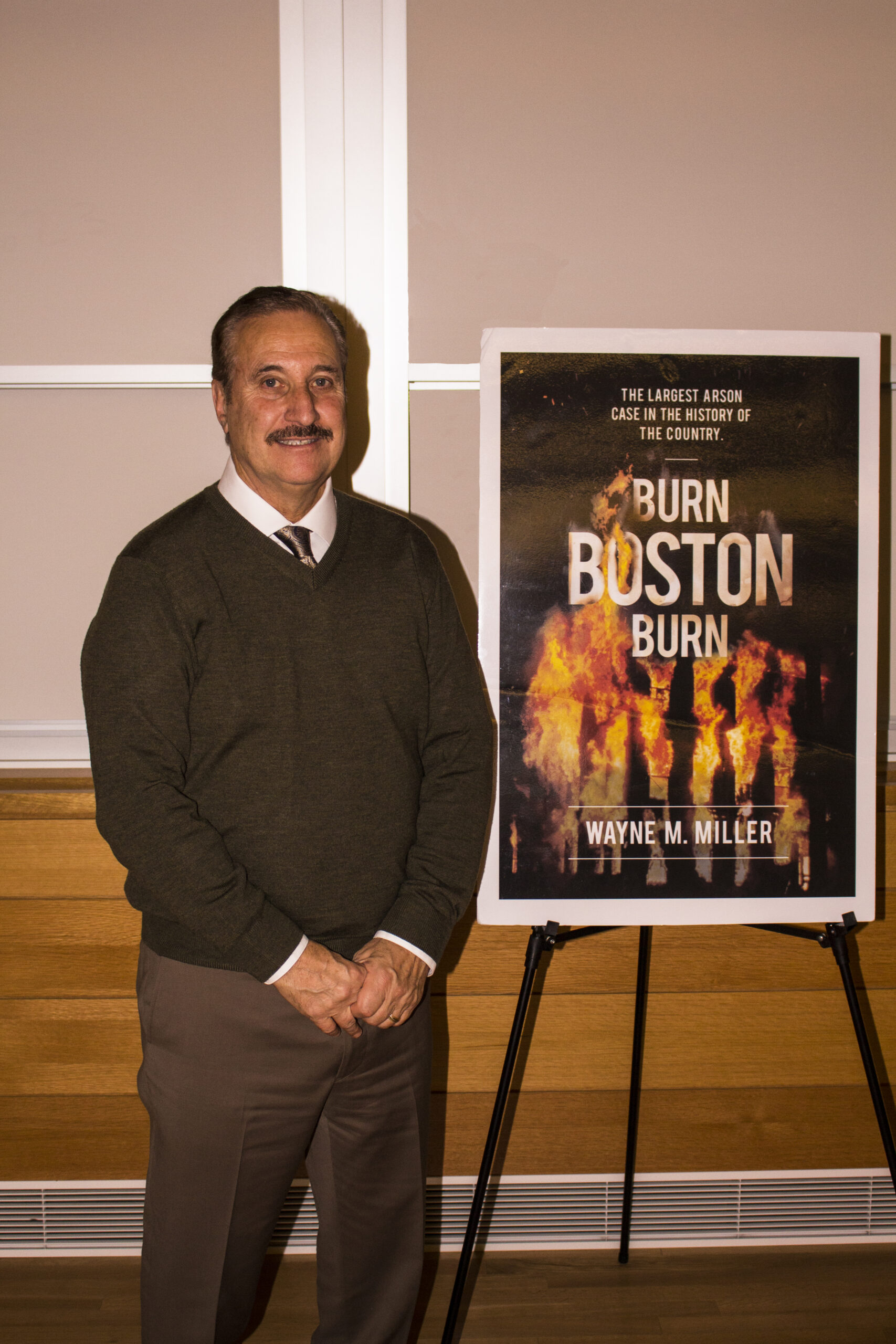Former ATF Special Agent Wayne Miller speaks on the various fire and explosive cases he has investigated. Photo by James McIntosh.
Photo Editor who somehow convinced himself to write an article thinking it would take WAY less time than it actually did. Seriously, how do some people take 5-6 stories a week? They are either very dedicated or complete masochists. Maybe both. Dedicated masochists? Anyway, here’s my first attempt at an article!
Former Bureau of Alcohol, Tobacco and Firearms Special Agent and seasoned fire expert Wayne M. Miller spoke about his experience investigating the largest arson case in American history during last week’s Forensic Science Seminar lecture series.
The seminar, titled Fire and Explosion Scene Forensics, delved deeper into the details of cases of arson, chiefly the multitude of arson in Boston after the passage Proposition 2.5., a 1982 statute the slashed budgets. It was particularly devastating for the Boston Fire Department, where 600 of the department’s 1,700 jobs were lost.
Miller’s book, “Burn Boston Burn,” provides an in-depth synopsis of the famous case he worked on that details the string of 264 buildings set ablaze in the early 1980s in Boston and the surrounding area in what became the largest arson case in national history.
As a result of Proposition 2.5 and its ensuing ramifications for Boston firefighters, a group of eight men, with a ninth joining later on, set fires around Boston in order to convince the public of the need for more firefighters in an effort to rehire those laid off. The group consisted of a Boston police officer, two Boston housing police officers, three firefighters and several firebugs, people who enjoy watching fires and collecting firefighting memorabilia.
The group set their first fire in February of 1982. Once they had begun, their efforts increased exponentially in the spring and summer of the same year, mainly targeting abandoned buildings and empty businesses after hours. Businesses were targeted later in the spree, as the fires gained more publicity and media attention.
“By the end of 1982, they had set approximately 140 buildings on fire,” Miller said. “By the time the spring finished another year later, 264 buildings were burned and 200-plus firefighters were injured.”
The group’s success can largely be attributed to the delayed response to the fires due to over one-third of firefighters being laid off.
“Twenty-two fire companies closed, fire trucks just sitting in fire houses not being used,” Miller said. “Some nights they were so busy, they had fire companies come from 25 miles away.”
According to Miller, another factor was the devices used in setting the fires that consisted of paper lunch bags with small zip-lock baggies, lantern fuel and tissue paper, which were then lit on fire by an interlaced matchbook and cigarette.
Miller described these devices as highly difficult to identify and analyze, especially after having been doused in water to put out the fire.
“Many of the folks we’ve talked to have said how hard it is to assign the source of the arson without a lot of science,” said Professor of Chemistry Jimmie Oxley.
The case was broken when a television cameraman caught one of the cops involved waving his gun in the air at one of the fires he was watching with other firebugs, as if in celebration, according to Miller.
Before making a name for himself as an author with “Burn Boston Burn,” Miller worked in the government investigating crimes.
According to his website, Miller spent 25 years as a special agent, criminal investigator and certified fire investigator for the United States Treasury as well as the Bureau of Alcohol, Tobacco, Firearms and Explosives. For the last 18 years, Miller has worked in the private sector, working as a fire and explosion analyst for Wright Group, Inc. based in Massachusetts.
Miller has seen over 2,300 fire and explosive incidents throughout his career. These incidents include criminal bombings, gas explosions, natural gas, gasoline explosions, fire-combustion explosions and dust explosions. Every fire and explosive problem is different, and over time Miller has learned a lot about the different types of incidents that can occur.
During the concluding minutes of his presentation, Miller went through dozens of forensic photos from many of the other fire and explosive cases he has worked on, such as electrical fires and a dryer fire. In going through these cases, Miller pointed out minute details and pieces of evidence in what otherwise appeared to be charred rubble.





